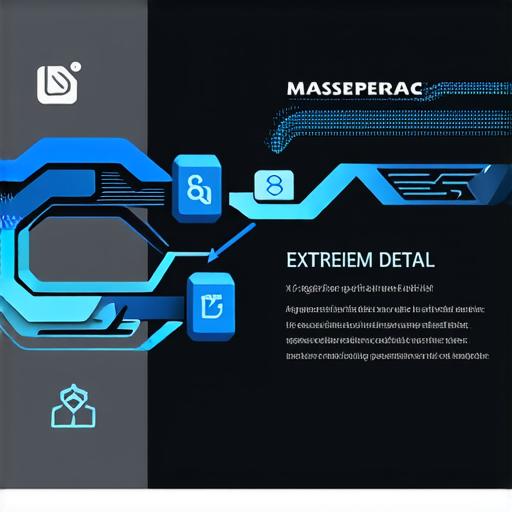If you are a developer looking to learn more about blockchain technology, then you’ve come to the right place. Blockchain is a distributed ledger that records transactions in a secure and transparent manner across multiple computers. It was first introduced by Satoshi Nakamoto as the underlying technology for Bitcoin but has since been adapted for use in many other industries such as finance, supply chain management, and identity verification.
What is Blockchain?
Blockchain is a decentralized, distributed ledger that records transactions across multiple computers in a secure and transparent manner. It was first introduced by Satoshi Nakamoto in 2008 as the underlying technology for Bitcoin, but it has since been adapted for use in many other industries.
Benefits of Blockchain Technology
Blockchain technology offers several benefits that make it attractive for use in many different industries. These include:
- Decentralization: Unlike traditional databases, which are controlled by a single entity, blockchain is decentralized and distributed across multiple computers. This means that there is no central point of failure and the network can continue to function even if one or more nodes go down.
- Transparency: All transactions on a blockchain are publicly visible and can be verified by anyone on the network. This creates a high level of transparency and accountability, which is particularly useful in industries like finance where trust is critical.
- Security: Blockchain uses cryptography to secure transactions and prevent fraud. The use of public-key cryptography ensures that only authorized parties can access the data, while the unique hashing of each block makes it difficult to tamper with the record.
- Immutability: Once a transaction is recorded on a blockchain, it cannot be changed or deleted. This creates an immutable record of all transactions that have occurred on the network, which can help to reduce fraud and increase trust.
Use Cases for Blockchain Technology
Blockchain technology has many potential use cases across various industries. Some examples include:
- Finance: Blockchain can be used to create a decentralized financial system that allows for peer-to-peer transactions without the need for intermediaries. This can help to reduce costs and increase efficiency in the financial industry.
- Supply chain management: Blockchain can be used to create a transparent and secure supply chain that tracks products from production to delivery. This can help to reduce fraud, improve traceability, and increase transparency in the supply chain process.
- Identity verification: Blockchain can be used to create a decentralized identity verification system that allows individuals to control their own personal data and prevent identity theft.
- Healthcare: Blockchain can be used to securely store and share medical records, improving patient privacy and reducing administrative costs.
How does Blockchain Work?
Blockchain works by creating a chain of blocks that contain information about transactions. Each block contains a unique hash that links it to the previous block in the chain. The hash is generated using a cryptographic algorithm and is based on the contents of the block, including the transaction data and the previous block’s hash.
When new transactions occur, they are broadcast to the network and verified by the nodes in the network. If the transaction is valid, it is added to the next block along with its own unique hash. Once a block is added to the chain, it cannot be changed or deleted. This creates an immutable record of all activities on the network.
Creating a Simple Blockchain using Python
Here’s how you can create a simple blockchain using Python:
- First, we need to define a
<Block>class that contains the transaction data and the hash of the previous block. - Next, we need to define a
<Blockchain>class that contains an array of blocks and methods for adding new blocks and verifying the integrity of the chain. - Finally, we can test out our blockchain by adding some blocks to the chain.
python
class Block:
def __init__(self, index, timestamp, data, previous_hash):
self.index = index
self.timestamp = timestamp
self.data = data
self.previous_hash = previous_hash
self.hash = self.calculate_hash()
python
class Blockchain:
def __init__(self):
self.chain = [self.create_genesis_block()]
def create_genesis_block(self):
create the first block in the chain, which has no previous block

return Block(0, time.time(), “Genesis Block”, “0”)
def add_block(self, data):
create a new block with the given data and the hash of the previous block
previous_block = self.chain[-1]
return Block(previous_block.index + 1, time.time(), data, previous_block.hash)
python
create a new blockchain instance
my_blockchain = Blockchain()
add some blocks to the chain
my_blockchain.add_block(“Transaction 1”)
my_blockchain.add_block(“Transaction 2”)
my_blockchain.add_block(“Transaction 3”)
This will create a simple blockchain with three blocks that contain transaction data and timestamps. You can verify the integrity of the chain by checking the hash of each block and comparing it to the calculated hash in the <Block> class.
Summary
Blockchain technology is an exciting new field that has the potential to revolutionize many industries. By understanding the basic principles behind blockchain and how it works, you can start exploring its use cases and potentially create your own blockchain applications. With its decentralized, transparent, and secure nature, blockchain technology is poised to become a major player in the tech world.
